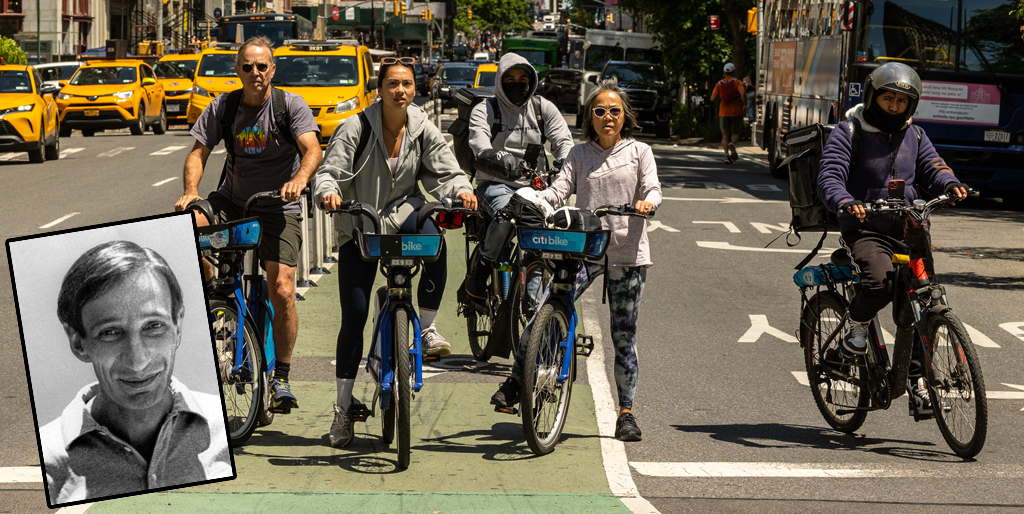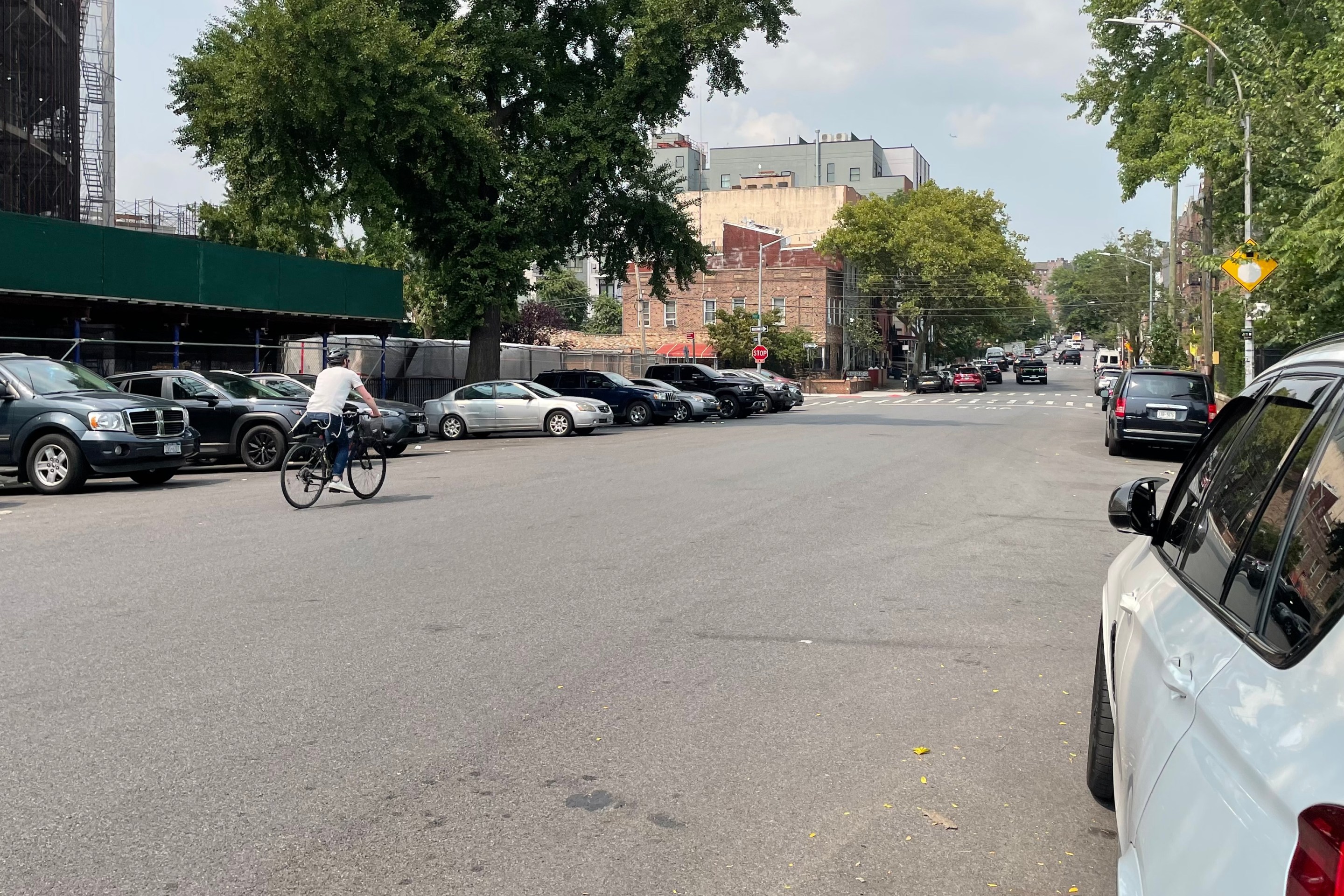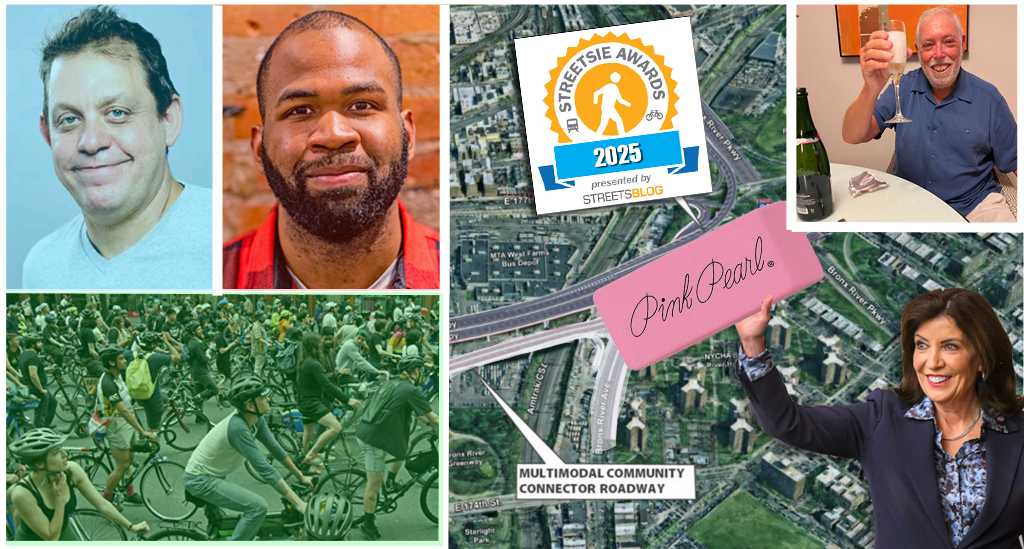This opinion column by Charles Komanoff is part of Streetsblog's ongoing coverage of Mayor Adams's initiative to lower e-bike speed limits citywide before doing so for cars. Streetsblog presents it simply to offer a valuable opinion by a longtime street safety advocate. But publication does not mean endorsement.
Cycling’s pre-eminent philosopher was born in Vienna, grew up in Europe, trained for the priesthood, ministered to Latin American’s working-class poor, and wrote a series of books that spoke to the global counterculture in the 1970s. His name was Ivan Illich. If he had a credo, it was to resist industrial culture in every sphere of life: education, health, agriculture and transport.
Like Coltrane with “A Love Supreme” or Melville in “Moby-Dick,” Illich fashioned a language so original and, at times, enigmatic, that his vast oeuvre has been flattened into the oft-repeated “finding” that driving doesn’t outdo walking at covering territory, once you factor in motorists’ hours expended to pay for the car and its maintenance, fuel and insurance. (And that’s without externality costs!)
Yet Illich’s reach extended far beyond one iconic quantification. His early-1970s volume Energy and Equity bestowed on emergent urban cyclists around the world not just a disarming arithmetic tidbit but a new vocabulary for contemplating cars, distances and bicycles. Witness his aphorism: “Beyond a certain speed, motorized vehicles create remoteness which they alone can shrink.”
That “certain speed," to Illich, was 15 miles an hour. That was the pace that demarcated travel rooted in community and personified by the bicycle, from motorized speeds at which “time scarcity related to traffic begins to grow” on account of the multiplication of road space that fast travel demands. Fifty years on, his 15 mph benchmark speaks to our city’s e-bike drama. When you re-read his epigram, “Free people must travel the road to productive social relations at the speed of a bicycle,” it seems likely that Illich would endorse the Adams administration’s pending 15-mph limit on powered two-wheel devices.
To be sure, Illich, like the rest of us, would have sought a broader solution and questioned the speed limit’s rollout and context. For one thing, it should only apply to bike lanes and paths intended for community use rather than commerce, like Manhattan’s Eighth Avenue lane and the Hudson River Greenway; anyone seeking to go faster — app-squeezed deliveristas, wannabe racers, electrified stand-up scooter riders — should be allowed to do so in general travel lanes, among cars and trucks. And he would have decried bloated roads and wink-wink enforcement that grant motorists virtual carte blanche to maim and murder.
I’m also certain that if Illich were alive today, he would be inveighing against the app-based delivery industry and the resulting inundation of our streets by electrified “micromobility” devices. I suspect that deliveristas account for a majority of total mileage driven on all such devices — and the advent of electric delivery bikes surely helped set off the upsurge in non-commercial e-cycling, including the ongoing replacement of pedal-Citi Bikes by electric ones. Just as yellow cabs once functioned as what traffic-safety advocate Harris Silver termed “pace cars” for New York driving, electric-powered delivery bikes have reset our expectations of how fast one can expect to dash from Point A to Point B, along with which traffic rules we should be allowed to bend and break in the process.
Illich’s criticisms of the entire enterprise of corporatized food-delivery would have cut deeper. “The use of energy on a massive scale,” he wrote, “acts on society like a drug that is psychically enslaving.” Did someone say drug? The deliverista, shackled to his vibrating phone and e-bike, has as his counterpart the harried office-worker or multitasking parent whose conditions of labor now include daily doses of overtime work or savory dish. All the while, civic space and sidewalk life wither as lawyers and coders hunker down in cubicles and restaurants devolve into prep kitchens, leaving streets populated by a grim, exploited workforce that is incentivized to treat pedestrians and bicycle-riders as hindrances rather than fellow travelers.
To paraphrase another last-century icon, Marshall McLuhan, on our streets the machine is the message. “There is an ugly entitlement that comes with piloting a powered machine,” writer Christopher Ketcham, a close friend, told me. “It happens when one drives a souped-up car or a big SUV, and it happens when you get on a 60-pound e-bike competing for space with riders of spindly bicycles less than half that weight.”
It also happens when "passing on your left" no longer helps the cyclist in front because the passing biker is overtaking too fast.
Bicycles, Illich observed, are “self-limiting.” Their speed, their range, even their destructiveness, if the rider were so inclined, are limited by the user’s musculature and the bike’s modest mass. Ketcham again: “Riding a trad[itional] bike takes work. It demands from the rider equal heapings of skill, poise, stamina, grace.” If the sweat factor or muscle strain loom too large, by all means use an e-bike. Just leave a little earlier.
It’s past time to recognize that trad and powered bicycles have similarities, but their disparate essences warrant their own regulation. And while advocates should keep on demanding separate pedal-bike and powered-bike lanes, that kind of huge change isn’t happening soon.
What is happening, big time, is civic unsettlement. Let’s be clear: Proliferating powered bikes are not the full-blown crisis of traffic violence City Hall is claiming. And, yes, cars kill orders of magnitude more New Yorkers than motorized bicycles. But dismissing the worry and fear e-bikes evoke is sophistry. The mayor’s 15 mph play is imperfect, but it beats what we have now — and certainly anything else we’ll get out of this administration as it sputters to its final end in December.
Ivan Illich died in 2002 and can’t approve this message. But I do.






